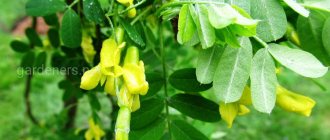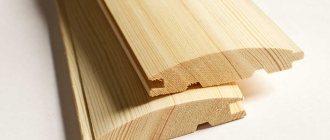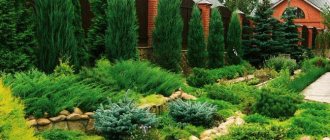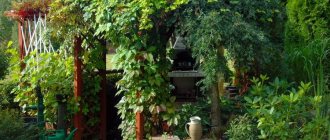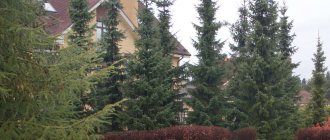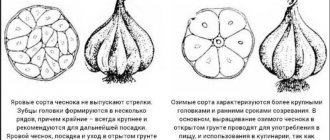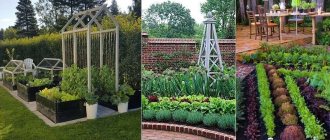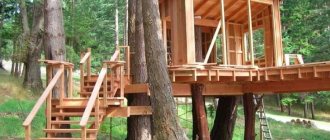Seedling care
Fertilizing the apple tree
Further care for the apple tree consists of regular loosening, weed removal, fertilizing and watering. If it's a rainy spring, watering can be reduced. While loosening the tree trunk, nitrogen fertilizer is added to help roots and branches grow faster.
Watering in the first month is carried out every week, 2 buckets of water for each apple tree. In the future, 4-5 buckets every 3 weeks will be enough.
Important! In winter, the trunks of young apple trees must be insulated by wrapping them with covering material for the first 3-4 years. This measure will also protect the tree from rodents
Description of culture
Growing a pear is more difficult than growing an apple tree. It is more thermophilic and is a less winter-hardy plant. Nowadays, there are about 1000 different varieties of pears all over the world. Recently, domestic breeders have developed those that grow well not only in central Russia, but also in the Far East, Siberia, and the Urals. These varieties can withstand even 40-degree frosts well. At the same time, the trees produce a good harvest of large and sweet fruits.
The fruits of this garden crop are very healthy. They have granular flesh, as they contain a large number of stony cells. 100 g of this fruit contains 58 kcal. The fruits are rich in micro- and macroelements, vitamins, potassium, phosphorus, iron and other substances useful to humans. Pears are used dried; they are used to make jam, marmalade, jams, juices, and compotes.
Bergamot pear variety
For your information! Most often, the following pear varieties are grown in our country: Tema, Bergamot, Duchess, Sibiryachka, Pamyat Zhigalova, Pamyat Yakovlev, Petrovskaya. They can withstand winter cold and produce high yields.
European euonymus
Both wild and cultivated shrub plant. In some areas of our country it is cultivated as an industrial plant, since the roots of the euonymus contain gutta-percha.
These wild shrubs grow up to 3 meters and higher in height. The leaves are quite large (up to 10 cm), oval in shape. The flowers are collected in inflorescences, so they become clearly visible. The color of the corolla is pink and white. After flowering, fruits are formed, red or dark pink. They are poisonous, but are used as medicines.
The decorative value of euonymus lies in its fruits and beautiful dense leaves. It is well suited for making spectacular hedges, which is why it is used in landscape design.
When is it better to plant - in spring or autumn?
When is it better to plant fruit trees in the Moscow region - in spring or autumn? There is no consensus on this matter. Everything depends on climatic factors
Pay attention to the amount of precipitation, air and soil temperatures, temperature changes
It is important to remember that the earth must be warmed up; There is no point in planting fruit trees in frozen soil. The seedlings will not take root or will often get sick
The seedlings will not take root or will often get sick.
Advantages and disadvantages of spring planting
In spring, plants are planted immediately after the snow melts. Delay in this matter is unacceptable: if you miss the due date, the amount of growth decreases and fruiting is delayed. This is the main disadvantage of spring planting.
In the spring, heat-loving trees are planted - peach, apricot, cherry. They need time to adapt to climatic conditions. If you plant them in the fall, there is a high risk of winter frost. It is also convenient that the planting hole is prepared for spring before winter; After the snow melts, all that remains is to prepare the seedlings and send them into the ground.
Also in the spring, summer residents have the opportunity to quickly respond to changes occurring with seedlings. For example, monitor their development and carry out preventive measures to protect against diseases and pests. And the spring supply of water in the soil has a positive effect on growth.
Pros and cons of autumn planting
In autumn, plum, apple, pear and quince trees are planted. Plants have time to take root before the onset of frost, and under the snow cover they gain strength for further development. One of the advantages is that in the fall there is a wider choice of different varieties of fruit trees. Vienna does not have such diversity.
However, autumn planting is not suitable for heat-loving plants. At this time, summer residents use seedlings with closed roots or container planting material. The roots must be in perfect condition, otherwise poor survival rate is guaranteed.
Cottage villages at a distance of 10 km from the Moscow Ring Road
Cottage communities at a distance of 10 km from the Moscow Ring Road
The most popular residential real estate properties are located in close proximity to Moscow. There are ideal living conditions and complete infrastructure everywhere. Despite the high cost, there is a demand for luxury housing.
Sergey Kolosnitsyn, director of the suburban real estate department at Penny Lane
It is almost impossible to structure “spontaneous” elite objects due to their diversity. The offer price is not always tied to the direction and distance from the Moscow Ring Road. In particular, in the ranking of the most expensive villages presented by realtors, along with nearby Rublyovka, there were the settlements of Kurkinskoye, Ilinskoye, Altufevskoye Shosse.
| Locality | Km from MKAD | Average cost of an object | Communications | Infrastructure | Security | Object class |
| n. Rozhdestvensky | 9 km | House 500 sq.m – 90 million rubles. | Gas, water, electricity, sewerage, telephone, internet | Kindergarten, schools, shops, sports grounds | Eat | Business |
| KP Shulgino | 7 km | 560 sq.m. – 112 million rubles. | Gas, water, electricity, sewerage, telephone, internet, video surveillance | Private schools, kindergartens, shops, sports grounds, beauty salons. | Eat | Premium |
| KP Novajo | 9 km | 370 sq.m – 80 million rubles. | Gas, water, electricity, sewerage, telephone, internet | Schools, kindergartens, development studios, shops, fitness center | Yes (patrol) | Premium |
| KP Svetly | 4 km | 400 sq.m. – 150 million rubles. | Gas, water, electricity (own, uninterrupted), sewerage, telephone, internet | Kindergarten, medical center, shops, swimming pool, sports grounds, tennis court | Eat | Business |
| Barvikha Club | 8 kilometers | 290 sq.m. – 50.8 million rubles. | Gas, water, electricity, sewerage, telephone, internet | Kindergartens, schools, shopping centers, shopping centers, sports clubs, etc. | Multi-stage system | Premium |
| KP Novoye Aristovo | 9 km | 200 sq.m. – 32 million rubles. | Gas, water, electricity, sewerage, telephone, internet | Shops, playgrounds, sports complex | Eat | Business |
| MZhK Rosinka | 9 km | 151 sq.m. – 28 million rubles. | Gas, water, electricity, sewerage, telephone, internet | School with in-depth study of English, British school, kindergartens, swimming pool, shops, sports grounds, private beach. | Eat | Premium |
| KP Daryin | 4 km | 310 sq.m. – 45 million rubles. | Gas, water, electricity, sewerage, telephone, internet | Yacht club, shops, boutiques, swimming pool, restaurants | Eat | Business |
| KP Antonovka | 10 km | 730 sq.m. – 186.9 million rubles. | Gas, water, electricity, sewerage, telephone, internet | Schools, kindergartens, shops, sports complexes, swimming pool | Eat | Premium |
Pestovskoye Reservoir in the vicinity of the village of Mikhalevo
There is enough supply in private sectors, villages and towns in the Moscow region. You can choose either fashionable mansions or calm, quiet areas with comfortable houses or apartments.
Cherry plum for the Moscow region - the best varieties
Cherry plum successfully crosses with plum, which has good frost resistance. In this way, cherry plum varieties suitable for the conditions of the Moscow region have been developed, including hybrids.
The culture can be roughly divided into several groups, which are a variety of cherry plum from the southern regions. For cold climate conditions, a hybrid based on Chinese plum was bred, which served as the basis for new frost-resistant varieties. Today this group of varieties is called “Russian plum”. In fact, this is a plum, which has a peculiar sourish taste.
The best varieties of cherry plum for the Moscow region are presented below.
Ruby
Ruby
Hybrid cherry plum, suitable for growing in the Moscow region. The variety tolerates drought well and is very resistant to frost. Has an average ripening period. It happens that it bears fruit unstably, as it depends on weather conditions.
The tree itself has a spreading, dense crown and medium height. The fruits average 30-35 g, dark red in color. The pulp is juicy, sweet and sour in taste.
Precocious
The variety has good frost resistance and early ripening. The fruits are quite large and red-orange in color.
Precocious
The trees are small in height, and fruiting is stable and begins in the 3rd year. Precocious cherry plum is a product of Chinese selection. Requires nearby pollinators. The pulp is yellow, pleasant and juicy. Overall, this is a tasty cherry plum variety that is perfect for fresh consumption.
Kuban comet
Perfect for small areas. It tolerates even severe frosts well, but is demanding on moisture. The tree itself is compact in size and has a good yield, reaching 40 kg per tree per season.
The fruits are colored red, but their flesh is yellowish. Weight is within 30 g. The bone is difficult to detach from the pulp. They have a sour taste, are good for processing, but can also be eaten fresh. This cherry plum variety is suitable for cultivation in the Saratov region.
Kuban comet
Traveler
Serves as a pollinator for many varieties, but at the same time has a high yield of up to 40 kg per tree. Resistant to frost and lack of watering. Cherry plum bears fruit in the 3rd year of life, has an average size and a standard crown. Refers to crops of medium ripening period. The fruits weigh 30 g. The pulp is dark yellow and has an unusual banana flavor.
Attention! If a gardener needs cherry plum for central Russia, the Kuban Comet, Mara, and Naydena varieties are considered the best choice based on the totality of their characteristics
Mara
Self-fertile cherry plum for central Russia. The Mara variety is perfectly adapted to these climatic conditions. Resistant to frost and typical diseases.
The crown is spherical, and the tree reaches a height of 3 meters. Due to the shape of the crown, regular pruning is required. The fruits ripen early and do not fall off the tree. The skin of the cherry plum fruit has a bright orange-yellow color. Pleasant to the taste, fibrous. This is probably the sweetest variety of cherry plum grown near Moscow.
Tent
Cherry plum Shater has a small tree in height, but begins to bear fruit in the 4th year of life. The crown is round in shape and points downwards, like a tent. The fruits are large, up to 40 g. The pulp is yellow, sweet in taste, but with sourness. The weight of the fruit varies within 40 g.
Tent
The description of the cherry plum variety Shater includes information about early ripening and great resistance to cold. The disadvantage is that the variety is not self-pollinating.
Found
The variety is classified as a crop with an average ripening period. The variety's resistance to frost is high, and it is also well able to adapt to temperature changes.
The tree is characterized by medium size and a round, slightly flattened crown. The average weight of the fruit is about 35 g. The pulp is yellow, the taste is pleasant with sourness. It has good precociousness, bears fruit from 3 years of age and has good yield indicators.
Found
Other famous varieties
In addition to those presented above, many gardeners in the Moscow region cultivate the following varieties:
- Gift to St. Petersburg;
- Monomakh;
- Huck;
- Timiryazevskaya;
- Scythian gold.
Attention! Most cherry plum varieties are conditionally self-fertile. Even if a particular plant is positioned as self-fertile, if other varieties are located closely, the yield will be significantly higher and the fruits will be tastier.
Melons
I plant zucchini, squash, and pumpkins. In the conditions of the Moscow region, growing them is not difficult. Last year I planted pumpkins for the first time – several of medium size ripened, I’ll try again this year.
In 2021 I chose the following varieties:
- Zucchini Griboedovskie 37 – mid-season (46-57 days), weight up to 1 kg, frost-resistant, fits well. I left it for storage and since last year it sat until February. The seeds inside have sprouted, but they taste great - I opened them a couple of days ago.
- Beloplodnye zucchini – early ripening (35-45 days), compact, few vines, weight 0.6-0.9 kg.
- Zheltoplodny zucchini – early ripening (43-50 days), bush, weight 0.7-1.8 kg, high-yielding.
- Patisson White 13 – mid-season (55-65 days), bushy, branching, 0.4-0.5 kg, high-yielding.
- Winter sweet pumpkin – late ripening (120-130 days), up to 7-12 kg, light gray, orange flesh.
- Pumpkin seeds are a variety, alas, I don’t know, I got the seeds by accident. Bright yellow pumpkins grew, medium in size, with juicy and sweet flesh. I’ll plant more and use them for carrot and pumpkin juice.
Last year I tried planting zucchini and squash in compost nets. This turned out to be very inconvenient. In the fall, I specially laid a warm bed for them, where I will plant the seeds in May 2021, first under covering material, then they will grow without shelter in open ground. I don’t plant zucchini and squash seedlings.
I will plant the pumpkins on the 2021 compost piles next to the potato field.
A diary about growing zucchini + squash and pumpkins in the Moscow region will be created immediately after planting the seeds in open ground - in May 2021. Updates with photos will be every week.
Columnar fruit trees for Siberia, Moscow region and Rostov region
Considering how seriously the climatic conditions differ in different regions of our country, breeders purposefully create columnar varieties of fruit trees with varying degrees of winter hardiness.
Columnar fruit trees have proven themselves well in Siberia:
- Iksha is an apple tree with large (up to 200 g) green fruits, characterized by high yield and keeping quality;
- Moscow Necklace - an apple tree with round burgundy apples weighing up to 200 g, is not only frost-resistant, but disease-resistant;
- Sayan - apricot with a yield of 17-45 kg, produces yellow-green fruits, tolerates frosty, snowy winters;
- Northern Lights - apricot with a yield of 13-47 kg with bright red fruits, characterized by average frost resistance;
- Mirabella - a plum with pink fruits (up to 40 g), ripening in August, is resistant to diseases and is distinguished by the fact that it does not fall off for a long time.
Mirabella
In the Moscow region they plant:
- Renet Mazherova is a winter-hardy apple tree, ripening in autumn, with bright yellow apples weighing up to 50 g;
- Medok is an apple tree that bears fruit with bright yellow apples with thick skin and a strong sweet aroma, weighing up to 140 g;
- Star - self-pollinating apricot producing large fruits (up to 60 g), the description promises up to 10 kg of yield from each tree;
- Prince March is a large-fruited (up to 60 g) apricot that can withstand frosts down to -30°C, therefore suitable for almost all regions;
- Blue Sweet is a plum with very sweet dark purple fruits weighing up to 75 g, with a yield of up to 15 kg per tree.
Columnar fruit trees for the Rostov region:
- Bolero is an autumn-ripening apple tree with green apples with a scarlet blush weighing up to 200 g;
- Snow White is an apple tree with light green apples weighing up to 130 g, ripening in October and characterized by excellent keeping quality;
- Gold is an apricot with very smooth fruits that ripen at the end of July; one columnar tree produces up to 10 kg of fruit;
- Golden Triumph is a peach up to 1.5 m high and producing up to 7 kg of fruit weighing 250 g each.
Golden triumph
How to deal with scab on fruit trees
This year the summer was relatively cold and very wet. Many trees in the Moscow region suffered from this increased humidity. This explains the relatively early ripening of fruits and their falling.
If you look closely at an apple, most of them will have a brown spot covered with white spots. If the infection is severe, the fruit may hang completely brown on the branch.
Such apples must be removed so that they do not spread the disease to other fruits and plants. The disease is called scab.
Another sign of the appearance of scab can be considered the presence of “fine dust” on tree branches. To do this, just take a twig in your hand. If you feel under your fingers that the branch is covered with dust, sand or sawdust, congratulations: the tree needs treatment.
What to do?
First of all, don't panic and don't make tough decisions. There is absolutely no point in cutting down or uprooting a tree.
After harvesting, completely spray the tree, along with its branches and leaves, with honey-containing preparations. Personally, I really respect the drug. It gives a quick effect. It is best to carry out the treatment in calm weather, in the morning or evening (the main thing is not under the hot sun) and it is advisable to ensure that it does not rain in the next 3 hours. It is also necessary to clear the weeds and treat the tree trunk circle.
What to do if the plant has not recovered?
Treat the affected apple tree with copper sulfate or Bordeaux mixture. Be sure to make sure that the solution gets everywhere: on the branches, new buds, and the tree trunk.
If the previous treatments did not help, it means that the solution did not reach somewhere.
If it comes to treatment with such harsh “medicines” as Bordeaux mixture and
Copper sulfate, then keep pets and small children in the house in advance. These solutions are very poisonous, and the beautiful blue color can attract babies.
Also, be sure to follow safety precautions. It must be written on every package sold in stores.
Carrot
I usually sow carrots directly into open ground around the end of April - beginning of May. I plant it together with onions. I don’t always get good carrots, or rather, they always don’t turn out very well. So I plant a lot and wait to see what happens in the end.
In 2021 I chose varieties:
- I don’t know the variety of my own carrot seeds. I planted the three largest carrots, which were preserved in the cellar until spring, and only one of them sprouted and produced seeds. I will plant these seeds separately and compare the results with those purchased.
- NIIOH-336 – mid-season (63-98 days), length 18 cm, high keeping quality.
- Emperor - late ripening (120-135 days), blunt-pointed, length 25-30 cm, good keeping quality.
- Queen of Autumn – mid-season (100-120 days), high yield, length 20-22 cm, suitable for storage.
- Tushon – early ripening (70-90 days), length up to 18 cm, for processing.
- Vitamin 6 – mid-season (80-100 days), length up to 17-19 cm, good keeping quality.
- Winter A-515 – mid-season (110-120 days), length up to 16 cm, blunt-ended, for storage.
I will be planting a lot of carrots and pumpkins in 2021. I want to try making homemade carrot and pumpkin juice. Last year there was a small harvest, I didn’t even close anything for testing.
A diary about growing carrots in the Moscow region will be created immediately after planting the seeds in open ground - in May 2021. Updates with photos will be every week.
Features of the climate zone
The Moscow region is located in the temperate continental climate zone. It is characterized by uneven distribution of precipitation. It happens that the bulk falls in autumn or spring. And in the summer there is drought. At the beginning of winter, severe frosts are not uncommon, accompanied by a sharp north wind. And in late spring there are recurrent frosts, when the temperature sets below zero for several days.
In such conditions, caring for the southern pear is quite difficult. The tree blooms early, and repeated spring frosts may prevent the flowers from pollinating and destroy the ovaries.
In conditions of a short warm period, it is recommended to plant early-ripening and early-fruiting varieties and hybrids. They begin to produce a stable harvest in the 3rd year of the tree’s life in the garden.
“The entire Kanatchikova dacha...”
0
The famous Kanatchikov Dacha (a psychiatric hospital mentioned in one of Vladimir Vysotsky’s songs) was built in 1894 with public donations in the village of the same name, which belonged to the merchant Kanatchikov. Today this territory is part of the capital. In Soviet times, the hospital was named after P. Kashchenko, but now it has returned to its original name - named after N. Alekseev (one of the initiators of the creation of the medical institution).
Gooseberry
Gooseberries are often called northern grapes or Russian cherry plums. An unpretentious crop produces good yields. The bushes feel great in illuminated areas. They are afraid of shade and waterlogging. You can find gooseberries in almost all regions. The bushes begin to bear fruit from the third year. The berries can be green, yellow or red-brown. There are at least 1500 varieties
Unlike currants, gooseberries are not afraid of drought.
Varieties of gooseberries
- European varieties are praised for their high taste. Disadvantage: instability to disease and frost.
- American ones are not afraid of drought and produce a good harvest. The size of the berries is inferior to European varieties.
- Hybrid - combines all the best. They are considered the most common in garden plots.
Features of care
Gooseberries do not tolerate acidic soils; it is recommended to add garden compost and lime to the planting trench. Bushes are planted in September. When planted in spring, the plant may die. Old and dry branches need to be pruned. Collect gooseberries as they ripen. Because of the thorns on the branches, it is better to do this with gloves.
Red gooseberries
The first royal dacha
0
See all photos in the gallery
The Russian imperial family first began to own a dacha in 1821, when Nicholas I, then the future emperor, gave his wife Alexandra Feodorovna land in Peterhof, where a three-story country mansion for summer holidays with 27 rooms was then built in 1826. The building with the plot and garden began to be called “Her Majesty’s own dacha Alexandria.” The word “dacha” in its current meaning was first used in a decree of Emperor Nicholas I in 1844. The decree was called “On the distribution of country land in the city of Kronstadt for the construction of houses or dachas and planting gardens.”
WINTER VARIETIES OF APPLE TREE / Brief description.
cherry plum, ripening already at the end of July. Tree of medium height, with a rounded crown. The fruits are medium-sized, up to 27 g, yellow with a red-violet tinge, the pulp is orange, fine-fiber, quite sweet and aromatic. The bone does not separate well. The variety is characterized by high frost resistance, annual abundant fruiting and early ripening. Disadvantages: small fruits with weakly detachable stones, self-sterility. Thus, frost-resistant varieties capable of growing and bearing fruit in central Russia were bred on the basis of hybridization of cherry plum with Chinese-Ussuri plum, which has increased frost resistance. They not only withstand the low temperatures typical of winter in the Moscow region, Central and even North-Western regions, but also have large, tasty fruits suitable for both processing and fresh consumption.
Apple tree Snowdrop.Ripening period and shelf life: summer - mid and late summer, fruits are stored for 1 week; autumn - September-early October, stored for 1-2 months; winter ones are removed from the tree in November and stored until mid-summer.
The apple tree is a universal tree that can grow in parks as an ornamental tree. In gardens, this is a tree that produces magnificent, juicy, aromatic fruits. Proper planting of an apple tree in the fall in the Moscow region will ensure a long life for the seedling and fruiting. She is developing and growing well. If the apple tree is undersized, then it puts out many new young shoots and branches. In terms of area, the Moscow region can compete with some European countries; the climatic conditions of the south and north of the region are strikingly different
Gardeners in the northern directions need to take this into account and purchase popular varieties of apple trees for planting in the Moscow region, paying attention to their frost resistance.
kupitsazhency.ru
Apples of medium ripening are red-orange, large, with thick skin and can be stored until the end of winter under appropriate conditions. The peculiarities of the variety are the requirements of agricultural technology. Such apple trees can be planted compactly, and the fruits can be collected without using improvised means. At the same time, the yield of the tree increases every year. High groundwater does not affect the plant, which distinguishes dwarf trees from tall varieties of apple trees. The tree ages early. Its lifespan is measured at two decades. To prevent the tree from depleting its reserve of strength and weakening its immunity, in the spring it is necessary to regulate fruit formation, leaving the optimal number of fruits on the branches.
- Eggplant varieties for the Moscow region
- The best varieties of eggplant for open ground
- Early varieties of cherries for the Moscow region
- The best varieties of cherries for the middle zone
- The best tomato varieties for juice
- The best variety for storing cabbage
- Cucumbers are the best varieties for open ground
- The best varieties of eggplant for the Urals
- The best varieties of tomatoes for the Krasnodar region
- The best varieties of cherries for the Moscow region
- The best variety of cucumbers for open ground
- The best varieties of radishes for greenhouses
Apricot
This tree is not afraid of frost, and some of its varieties thrive in the Moscow region. Yes, the fruits are not as sweet as in the south, but they are ideal for homemade preparations. The tree bears fruit from the last days of July until mid-August. It all depends on the chosen variety. Early varieties are “Lel”, “Alyosha”, “Tsarsky”, middle ripening ones are “Countess”, “Aquarius”, late fruiting is “Favorite”, “Monastic”. Experts recommend planting several apricots in one garden.
Useful and harmful proximity of fruit trees and shrubs in a garden plot
- Some crops prefer to grow in the sun, while others easily adapt to the shade.
- For some fruit trees and shrubs in the garden plot, an open, windswept place is suitable, while for others you will have to find shelter.
- Plant requirements for fertility and watering vary.
It is unlikely that in a limited area of land it will be possible to satisfy all the needs of green pets. In a small country garden, inevitably some shrubs end up under the canopy of growing trees. To ensure that such proximity does not affect the yield, the location for planting shade-loving fruit trees and shrubs in the garden is determined in advance.
Such crops include black currants, honeysuckle, low-growing berry bushes, such as cranberries, blueberries and lingonberries. If the shady corner of the garden is well ventilated, viburnum will thrive here. Blackberries and raspberries are grown in partial shade.
Gardeners have long noticed that even in comfortable conditions, garden plants sometimes refuse to bear fruit at full strength, look depressed and grow poorly. It turns out that the reason for this behavior is an incorrectly chosen neighborhood. As in nature, in an orchard, trees, shrubs and herbaceous crops form close communities. The given options for successful and dangerous neighborhoods of fruit trees and shrubs in the table will help create the best conditions for each species and get the maximum benefit from it.
Winter varieties
Late varieties are distinguished by even greater qualities in terms of shelf life, as well as many taste characteristics. Among them are the following: Pass-Crassan, Saratovka, Kondratievka, Olivier de Serre, Otechestvennaya, Josephine of Mehelnaya, Bere Ardanpont and others.
When choosing varieties for the Urals, Siberia, for the Moscow region or even for Ukraine, we would advise you to start not only from cute names and ripening periods, but also be sure to pay attention to the characteristics of the plants. It is worth noting the fact that many types of pears and apples can grow with virtually no care, that is, it will be enough to plant trees in the garden or even outside the yard, sometimes water them, harvest and trim only those branches that are in your way
But it is quite possible that you will choose columnar varieties of pears, Chizhovskaya, Bera, Lada, Severyanka, Lesnaya Krasavitsa, Maria or others with large and sweet fruits. In this case, the trees will definitely need stable care if you, of course, want to have a constant harvest
It is worth noting the fact that many types of pears and apples can grow with virtually no care, that is, it will be enough to plant trees in the garden or even outside the yard, sometimes water them, harvest and trim only those branches that are in your way. But it is quite possible that you will choose columnar varieties of pears, Chizhovskaya, Bera, Lada, Severyanka, Lesnaya Krasavitsa, Maria or others with large and sweet fruits. In this case, the trees will definitely need stable care if you, of course, want to have a constant harvest.
Advice from experienced gardeners
- Experienced gardeners recommend choosing varieties of fruit trees zoned for the Moscow region. Otherwise, survival cannot be guaranteed.
- Experienced gardeners advise buying seedlings only from nurseries. Cheap specimens purchased at the market or along the road may not correspond to the declared variety. Therefore, it is better to overpay a little for confidence in quality than to waste time, effort and money.
- You should not plant many specimens of the same crop with the same ripening period on a site. For example, several early apple trees in a harvest year will create a big problem in fruit processing. As a result, the harvest obtained with such labor may simply spoil.
- The variety must be zoned specifically for the place in which it will be planted. You shouldn’t fall for newfangled imported items; domestic varieties have been tested and correspond to the description.
- An error in the name of a variety is the first sign that it is most likely a fake. Companies that value their reputation do not allow this to happen. You should not be embarrassed to ask the seller for a certificate authorizing the sale of planting material.
- The plant needs to be well prepared for winter, providing it with moisture and nutrients. Forming a culture in the form of a small tree will protect you from the strong effects of weather disasters.
Growing the garden of your dreams in the Moscow region or another northern region of Russia is not easy. But with the right choice of variety and sufficient care, everything will work out.
Sources:
https://stroyremo.ru/8-kakie-plodovye-derevya-posadit-na-uchastke.html https://glav-dacha.ru/plodovye-derevya-i-kustarniki-v-sadu/ https://7ogorod .ru/plodovye-derevya/dla-podmoskova.html
Autumn varieties
In the Moscow region, autumn varieties do not fully ripen on trees: they are harvested slightly unripe. And then they arrive in a cool, dark place.
Muscovite
Muscovite should be planted in the country. It is undemanding to soil and light. Tree value:
- precociousness;
- compactness (height up to 3 m, raised rounded crown);
- annual yield (up to 40 kg per tree);
- resistance to fruit shedding;
- winter hardiness (fruit buds are stored at -27 degrees);
- sweet taste of fruits;
- keeping quality (up to 4 months);
- transportability;
- drought resistance;
- resistance to excessive crown overgrowth.
The fruits make excellent compotes, preserves and jams.
Red-sided
Red-sided grows in almost any soil. And she is undemanding to care. This tree grows more than 4 m. But the crown is resistant to fouling, so lightening pruning is carried out once every 2 years. Plant value:
- frost resistance;
- productivity (up to 80 kg from 1 tree);
- resistance to scab;
- large-fruited (pears reach 180 g);
- excellent taste (sweet, tart, improves after 3-4 days of storage);
- keeping quality (fruits are stored until the New Year);
- productivity (from 1 tree you can collect 1 quintal of fruits);
- universal use of fruits.
But Red-sided is not precocious: it begins to bear fruit in the 7th year of life in the garden.
Elegant Efimova
Early autumn pear. It has very beautiful (elegant) fruits. The taste is sweet, according to the tasting rating - 4.5 points out of 5 possible. The tree is frost-resistant, undemanding to soil, moisture and care. Practically does not get sick and is not damaged by pests.
Hera
The tree has a pyramidal crown. There is practically no thickening. Variety value:
- frost resistance;
- excellent taste and consistency of the fruit;
- long shelf life (up to 5 months);
- resistance to shedding;
- transportability;
- large fruit (up to 200 g);
- rapid restoration of the crown after freezing.
Hera is resistant to fungi and bacterial infections.
Yakovlev's favorite
Yakovlev’s favorite is appreciated for the quince aftertaste of the fruit. Advantages:
- winter hardiness;
- taste;
- beauty of fruits (yellow-pink, ruddy);
- productivity (increases with age).
But Lyubimitsa is not quick-bearing: the gardener receives the first fruits in the 7th year of the tree’s life in the garden.
Fabulous
Pear is distinguished by large fruits (up to 250 g). Practically not affected by scab and mites. The fruits are great for making purees and jams. Among the disadvantages of Fairytale, gardeners note the high crown, from which it is difficult to remove ripe fruits.
White cabbage
I plant just a little bit of white cabbage. A little for food, a little for storage. I don’t like it and practically don’t eat it. Once I wanted to try making a hodgepodge with mushrooms, but... it’s too difficult: there’s no cabbage, there’s no mushrooms.
In 2021, there was a complete failure with white cabbage. At first, practically no seedlings sprouted, only the mid-ripening Slava pleased me. I planted purchased seedlings, but they didn’t start. The heads of cabbage turned out to be the size of a child's fist. I cut everything off and made a vegetable stew with rice. And I forgot about her. So much effort went to waste - terrible.
In 2021, I will plant only two varieties of white cabbage:
- Gift – medium late variety (90-110 days), weight 3-4.5 kg, for storage. Good and stable variety. It was she who produced a couple of good heads of cabbage last year.
- Moscow late 15 – late-ripening variety (115-141 days), weight 3.5-6 kg, for eating and for pickling.
I will plant seedlings immediately in open ground under film in April, then I will plant them in a permanent place.
A diary about growing white cabbage in the Moscow region will be created immediately after planting the seeds for seedlings - in April 2021. Updates with photos will be every week.
What properties should an apple tree have for good growth and productivity in the Moscow region?
To harvest a good harvest of apples, you need to choose varieties that resist pests and diseases, are not afraid of low temperatures and quickly recover in case of freezing. When choosing the best variety, ripening time, fruiting periods and pollination methods are also taken into account.
The choice is also made in favor of self-pollinating apple trees. These varieties of apple trees bear fruit without pollinating insects. Such varieties of culture for the Moscow region include: Pepin Saffron, Melba, Welsey.
External parameters
Tall varieties of apple trees grow up to 7 meters, the crown is wide. They are distinguished by a well-developed root system that penetrates deep into the soil. Therefore, there should be at least 2.5 meters from the surface to groundwater. Large apple trees live and bear fruit longer; they do not need to be watered too often. The yield is consistently high.
Low-growing varieties of apple trees have a short trunk, up to 2.5 meters high. The root system deepens one meter. Low trees take up little space and create almost no shade; they begin to bear fruit early. In case of pest attacks and infections, it is easier to cope with the problem. These trees are easy to harvest. The root system is sensitive to moisture, so waterlogging of the soil leads to its damage.
Frost resistance
Almost all types of apple trees can tolerate frosts down to -20 degrees. But the air in the Moscow region can drop to -30 degrees, so frost-resistant varieties of apple trees are chosen.
Winter-hardy varieties of fruit crops that can be planted in the garden of the Moscow region: Anise, Orlinka, Aport, Slavyanka, Yellow ribbed, Mirnoye, Semerenko, Antonovka, Bogatyr.
Immunity to diseases
The apple tree is often exposed to various diseases, especially of fungal origin. Diseases such as powdery mildew, scab, and cytosporosis can not only reduce the amount of yield, but can also lead to the complete death of the tree.
Experts have developed immune species of apple trees that are resistant to many fungal diseases, including scab. Such apple trees begin to produce large fruits early and withstand frost.
Scab-resistant types of fruit trees that are recommended to be grown in the Moscow region: Orlinka, Lungwort, Yablochny Spas, Zhigulevskoye, Slavyanin, Start, Freshness.
Precocity
Varieties that are distinguished by the early onset of fruiting are most often purchased by gardeners. Seedlings begin to produce fruits 2-3 years after planting.
Self-fertile varieties of apple trees pollinate themselves, so the fruits are set without pollinators. But to obtain a large and numerous harvest, you should try to lure insects that pollinate during the flowering period. Moskovskaya Grushovka, Arkadik, Medunitsa, Antonovka, Belyi Naliv.
Early fruiting varieties of apple trees: Beforest, Papirovka, Stark, Erliest. The first harvest is harvested three years later. Apple trees feel good after severe frosts, and the harvested crop is stored for many months.
Principles for selecting plantings for your own plot
Gardeners and summer residents want to see beautiful plants bursting with health on their plots. For a seedling to take root and develop, aesthetic preferences alone are not enough.
An important element at the stage of selecting varieties is the existing climatic conditions and soil conditions. A common cause of wilting and death of plantings is the incorrect selection of plants.
Now breeders have developed new resistant species that are adapted to more severe weather conditions. You should not hope that a heat-loving tropical plant will take root in northern latitudes.
We also contain some varieties of exotic flora representatives. Such specimens are often more demanding in terms of maintenance. Therefore, when choosing ones that are unusual for your climate zone, be prepared for the fact that you will have to devote more time and effort to care.
Before planting a tree in your garden, make inquiries about its needs and characteristics. First make sure that the climate is suitable for it, and it will not die.
In addition to weather conditions, it is worth taking into account the quality and condition of the soil, the characteristics of the relief, the proximity of groundwater and the size of the site.
What varieties of fruit trees to choose
Apple tree
Three different classes, which are divided according to ripening time.
The following apple trees grow best in summer for this region: Yubilyar, Krasulya, Medunitsa, Arkadik, Iyulskoe Chernenko, Bely Naliv, Orlinka. The storage period for fruits that ripen in summer is no more than 2 weeks.
Those that ripen in the fall bypass those that ripen in the summer, they can lie from 30 to 90 days, for this climate the following are suitable: Zhigulevskoe, Korichnevoe, Orlovskoe striped, Ordinary Antonovka, Uspenskoe, Solnyshko, Skala, Venyaminovskoe, Kurnakovskoe will take root well.
Winter plants can be stored the longest (more than six months): Veteran, Orlik, Imrus, Sinap Severny, as well as Enchantress, Rozhdestvenskoye, Kulikovskoye, Bogatyr. Zarya Orlovskaya and Lobo can take root.
Early fruiting columnar fruit trees for the Moscow region: Chernovets, Malyukha, President, Currency.
Pear trees
Among the pears that ripen in summer, Lada, Severyanka, and Pamyati Vavilov pears are suitable for Moscow; you can also grow Chizhovskaya or Petrovskaya, Cathedral pear.
If summer ones are not suitable for storage, then autumn ones are stored for up to 30 days, especially Moscow Bergamot, Late Belorusskaya, in memory of Yakovlev, Nadezhda, the famous Vesel pear, the Moskvich pear of the same name.
Cherry
If you want to grow cherry berries in your Moscow garden, then it is better to use Polveka, Shokoladnitsa, Lotovaya, Shchedraya or Volzhskaya.
You can try cultivating Youth, Ruby or Lot cherry. Morozovka, Apukhtinskaya, Kentskaya are not bad for the climate.
Also in the gardens of this region there are Lyubskaya, Bagryannaya, Vladimirskaya cherry, Rovesnitsa, Volochaevka, Tambovchanka.
Cherries
For Moscow, from mid-season plants you can plant Fatezh, Rechitsa, Teremoshka.
For an early harvest, it is better to plant Chermashnaya or Krasnaya Gorka, you can use Iput, Ovstuzhenka, Early Sadko.
For a late harvest, you can cultivate Revna, Tyutchevka, and Bryansk pink cherries.
Cherevishnya
The best varieties of Miracle Cherry are Zhukovskaya, Krepkaya, Beauty of the North, Miracle Cherry, Nurse, and Memory of Vavilov.
Plum
The following plum trees are suitable for the Moscow climate: Eurasia-21, Smolinka, Alexy, Yakhontovaya, Kitayanka, Tula.
If we talk about early ripening plants, then these are, of course, Skoroplodnaya, Super-early egg blue (you can plant the usual one), Skorospolka red, Early trans-river plum.
Blue Gift, Opal, Morning, Hungarian Moscow, In Memory of Timiryazev, Alexy, Victoria are grown.
Cherry plum
Cherry plum is divided into early varieties, which include Traveler, Shater, Cuban Comet, and late varieties - Promen, Krasnolistnaya TSKHA, Sigma.
From the early ones you can plant Scythian Gold, Found, and from the later ones - Gift to St. Petersburg.
Cherries
When deciding which fruit trees to plant on your site, you should consider cherries. This wonderful, romantic and beautiful tree will decorate any garden. Previously, it was believed that it does not ripen well in the middle zone, but now special varieties suitable for the Moscow region have already been bred. Their fruits are tastier than those from the south, ideally combining sourness and sweetness. It is advisable to plant several cherries on the site, choosing different varieties. The harvest is usually taken in June and July, the timing depends on the ripening group: there are early, middle and late varieties. The early ones include “Krasnaya Gorka”, “Iput”, “Chermashnaya”, the middle ones - “Teremoshka”, “Fatezh”, “Rechitsa”, the later ones - “Revna”, “Tyutchevka”, “Bryanskaya Rozovaya”.
Blueberry
In many regions it is considered a rare berry. More often it can be found in the wild. There is a growing interest among gardeners in growing promising varieties on their plots. With proper care, you can have a good harvest of healthy berries.
Blueberries resemble blueberries in appearance.
Blueberry varieties
- Tall varieties do well as hedges. Their bushes are branched, the berries have an intense blue or dark blue color.
- Low-growing blueberries bloom luxuriantly in spring, delighting with excellent yields and neat bushes.
- Southern varieties were developed through hybridization for cultivation in arid climates.
